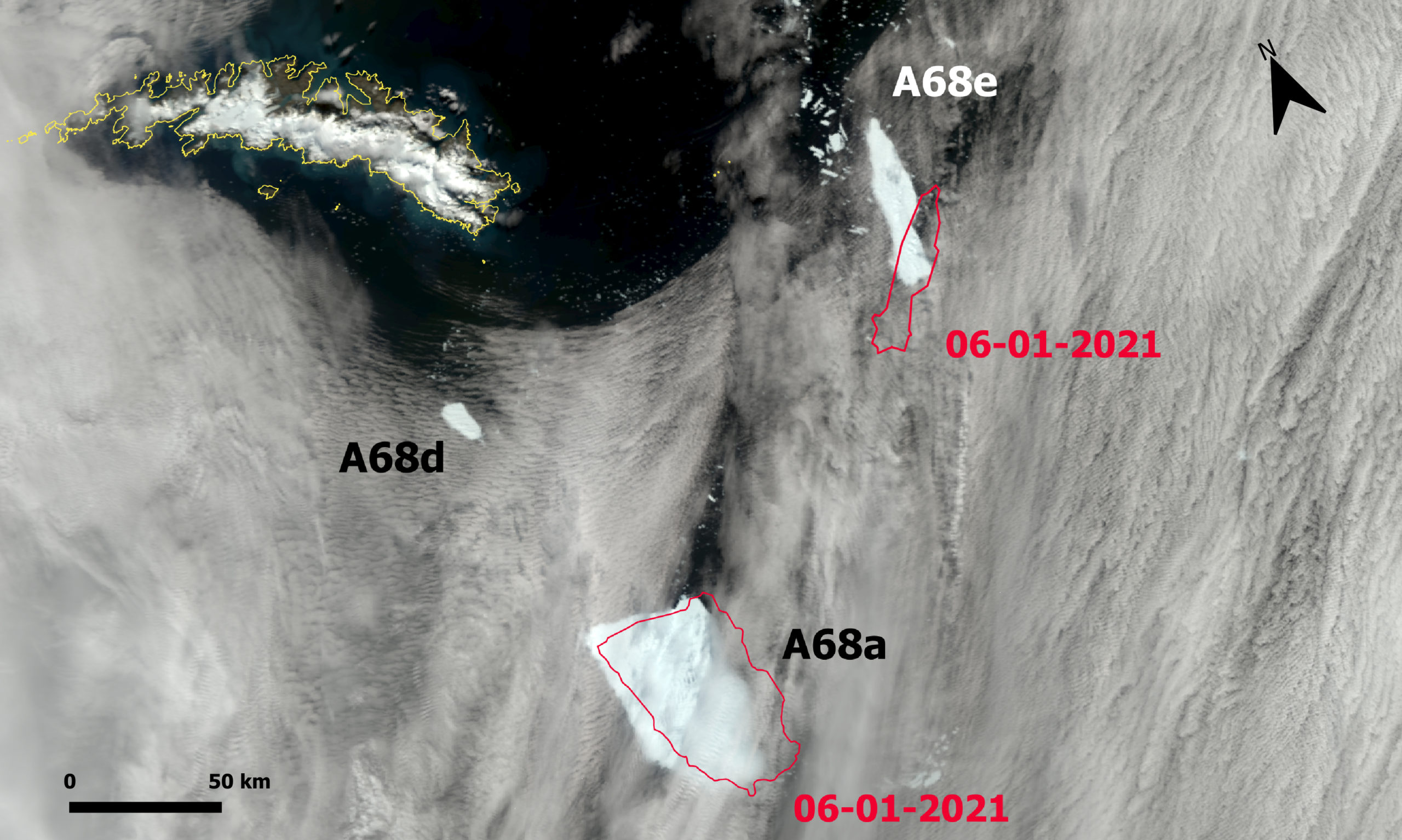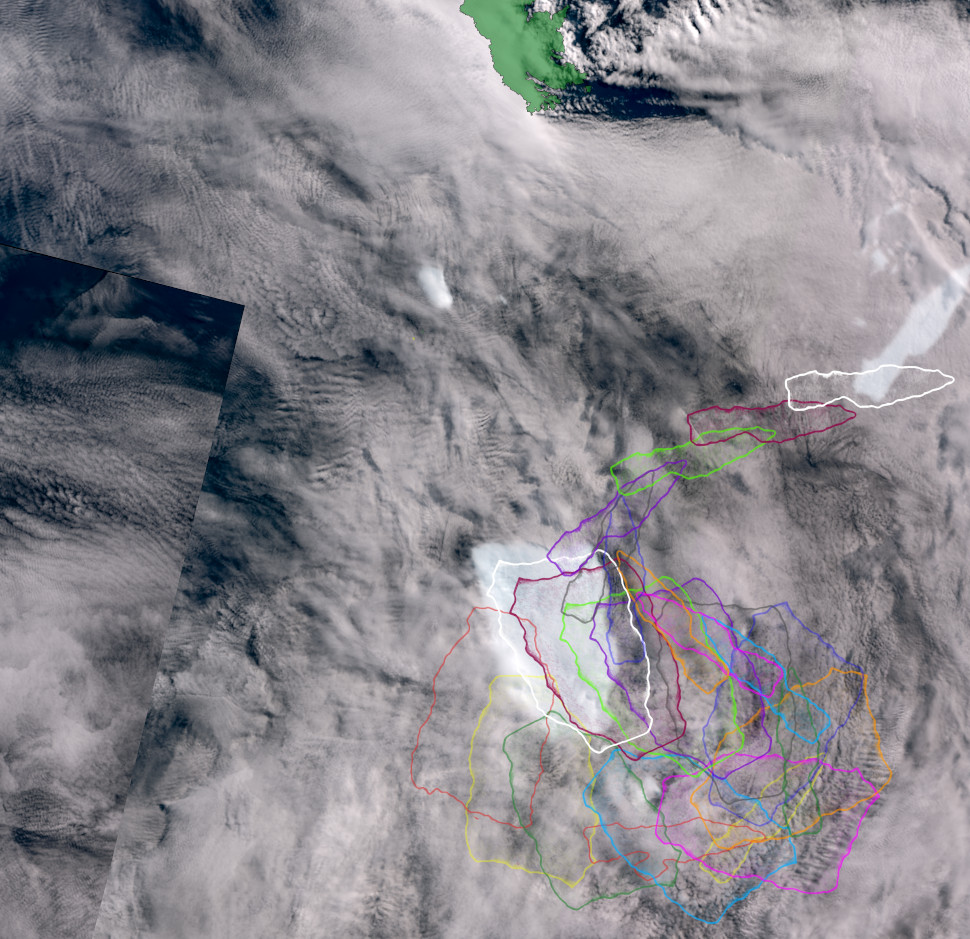A68a, the world’s most famous iceberg, is still hanging out near South Georgia island, along with its recent offspring. Here’s what we know about these gigantic chunks of ice and how the situation might develop from here as ocean currents swirl the ‘bergs.
Once a cohesive iceberg, A68a is now accompanied by two smaller pieces, A68d and A68e (a couple of other pieces fell off earlier during the iceberg’s long journey from Antarctica that began in July 2017). A68a — currently the world’s largest free-floating iceberg — appeared to be headed straight towards South Georgia island in November, but it began to take a more easterly route in mid-December. It’s still very close to the island, and its future trajectory remains unclear. And in fact, each of the three big pieces appear to have minds of their own.
“The biggest chunk, A68a, seems to be caught in an eddy about 150 kilometres south of South Georgia island the last few days, rotating counter-clockwise and also moving back west again,” Pierre Markuse, a a remote sensing expert, explained in an email. “Hard to tell when it will break free, it could be stuck for a while or soon follow A68e on its northeastern route following the Southern Antarctic Circumpolar Current Front (SAACF).”
Iceberg A68a travelled some 1,497 kilometres over the past three-and-a-half years. If it eventually comes out from the eddy and into the SAACF, it will follow in the path many other Antarctic icebergs have travelled along the current, sending them towards and often around South Georgia.

The image above shows the situation on Thursday. The red outlines show the positions of the icy objects as they appeared yesterday, as Antonio Vecoli, a remote sensing engineer, explained in an email.
The smallest of the three pieces, A68d, is practically stationary, sitting some 60 kilometres south of South Georgia, and it’s “just moving a bit back and forth,” said Markuse. This chunk detached from the larger structure back on Dec. 18, 2020, when A68a appeared to slam into the shelf surrounding the island. It’s possible A68d, measuring around 181 square kilometres, is moored to the seafloor, but we don’t actually know.
For a long while, A68a appeared as a pointing hand with an extended index finger. It no longer appears this way, as the “finger” broke off around Dec. 23, 2020, becoming iceberg A68e. This piece of ice, measuring 61.2 kilometres long and 14.5 kilometres wide, is also doing its own thing right now.
As Markuse explained, A68e “continued to move to the east and lately also to the north, at the moment seemingly following the SAACF, which would make it pass South Georgia island to the east.”

The image above shows the positions of A68e and A68a over the last few weeks. The natural colour part of the image shows the situation as it appeared on Wednesday, while older positions appear as the coloured outlines.
“You can see that A68e is lately following the SAACF, picking up speed,” said Markuse. “A68a is just rotating counterclockwise and slightly moving west again.” A68d and South Georgia island are also visible towards the top of the image.

Andrew Fleming, the remote sensing manager at British Antarctic Survey, said the SAACF will likely turn the icebergs north again, pushing them back towards South Georgia.
“The latest positions already shows them starting to move in this direction,” Fleming wrote in an email, referring to the map above. “We will continue to monitor their movement as they may still ground on the shallower continental shelf around South Georgia as previous icebergs have done.”
